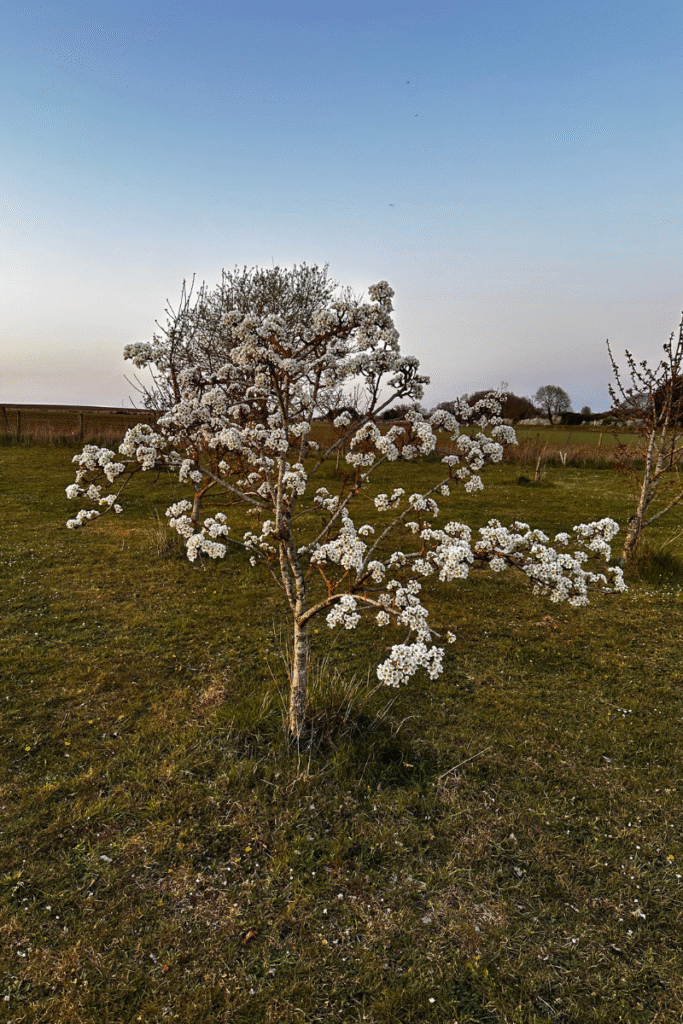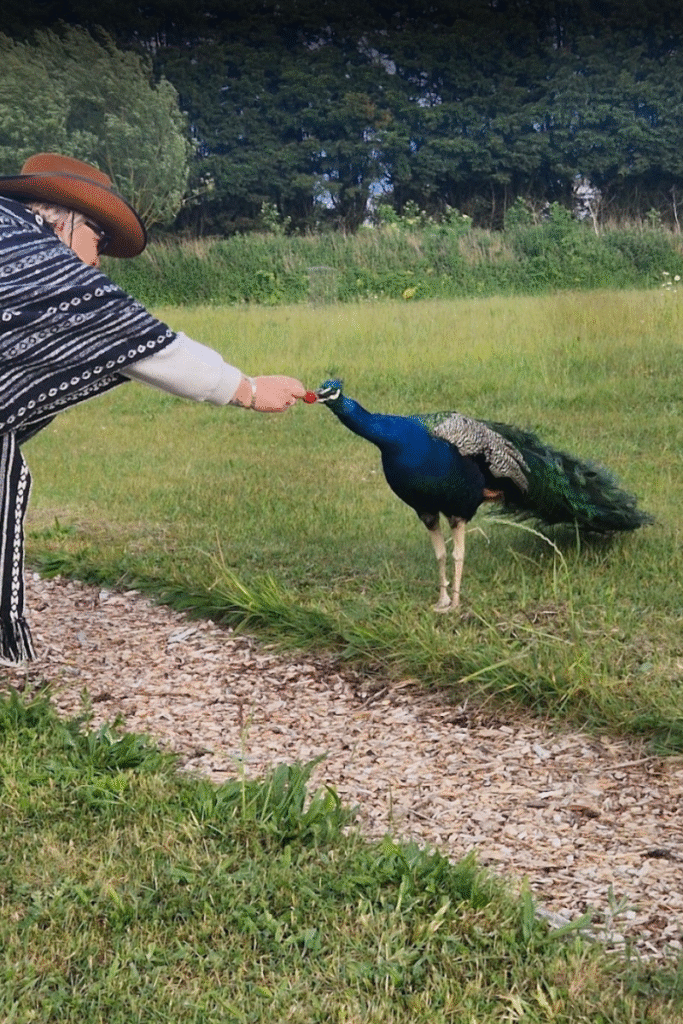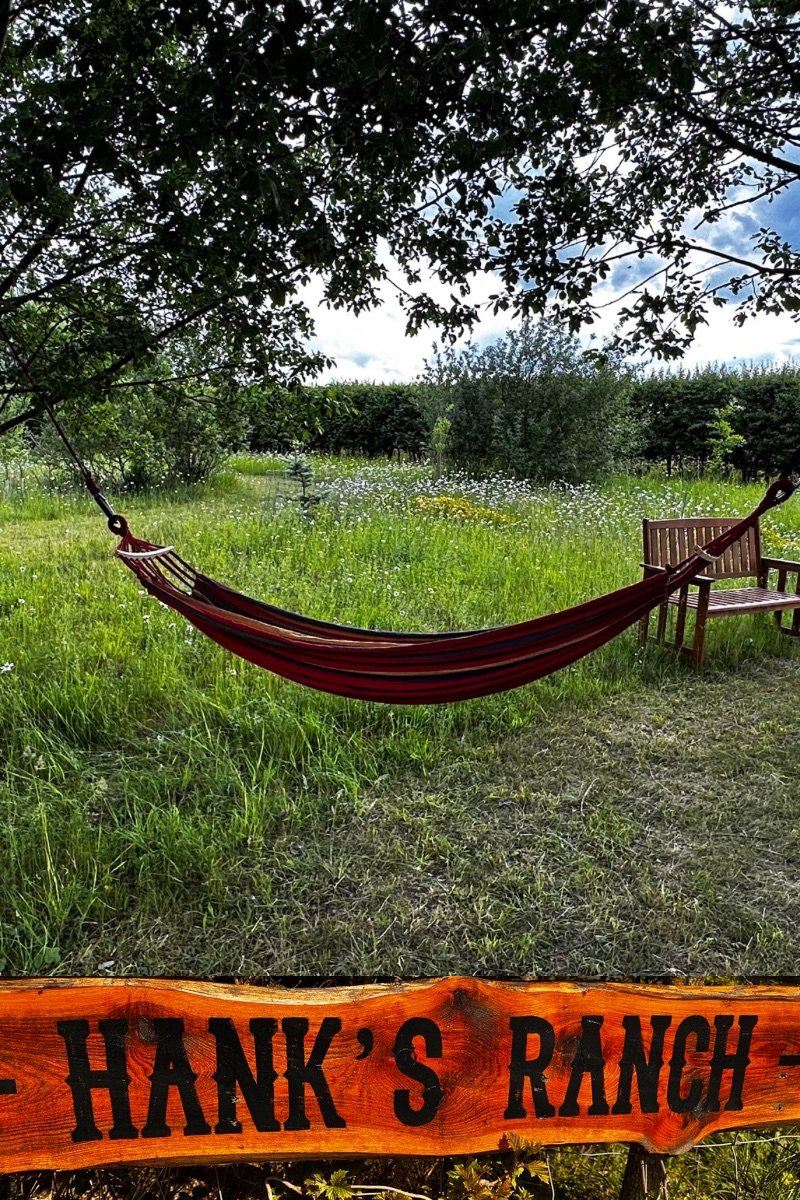Here at Hank’s Ranch, we’ve always believed in sharing our land with the creatures that call it home. Over the past few years, we’ve worked steadily to improve the site for nature and wildlife—not all efforts have gone exactly as planned, but each one has taught us something. And as any good steward of the land will tell you, it’s a process of learning, adapting, and continuing the work.
Here’s a look at the steps we’ve taken, what’s worked well, what hasn’t (yet), and what we’re still striving for.
Wild Corners and Untamed Patches
One of the simplest and most successful changes we’ve made has been… doing less. Leaving wild areas of brambles, nettles, and deadwood has provided incredible habitat. Deer now nestle into the brambles, birds feed on the blackberries, and we also get to enjoy the bounty of wild fruit. It’s a reminder that nature often thrives best when it’s just left alone.
Letting Grass Grow and Flowers Bloom
Our long grass areas and wildflower meadows have been buzzing—literally. We’ve seen a wonderful increase in butterflies and pollinators, hares using the long grass to raise their young, and even dormice nests tucked away in these undisturbed areas. Grass snakes have been spotted basking in the sun, and it’s clear this natural approach is paying off.
Bird Boxes and Natural Nests
We’ve added several bird boxes with mixed results. In the early days, a family of blue tits was unfortunately attacked by sparrows, but after fitting the boxes with hole protectors, we’ve now successfully seen two clutches of blue tits fledge. We added an owl box too, but it hasn’t attracted any owls—yet. It may be in the wrong location, so we’re scouting for a better spot. That said, owl pellets found on the decking of the jail confirm they’re regular visitors.
Elsewhere on the site, birds are choosing their own nesting spots—robins in the barn, blackbirds in the shed, and wrens in the hedging. Overhead, red kites, buzzards, and sparrowhawks are regularly spotted surveying the land.
Sowing Wildflowers on the Bund
We spread 25kg of wildflower mix, including clover, across the newly moved bund to stabilise the soil and bring colour to the landscape. The initial result was underwhelming—some flowers appeared, but many were quickly eaten, possibly by deer or rabbits. However, the meadow continues to flower every summer and we’re committed to adding more varieties each year to help it thrive.
The Thriving Orchard
Our orchard is coming into its own. With cooking apples, several varieties of eating apples, plums, pears, quince, and even cherries (which we generously leave for the birds), it’s a hub of biodiversity. The crab apples help wildlife through the winter, and this year’s big success has been the peach tree—we’re eagerly awaiting our first taste!

Hedgerow Resilience
One part of our native hedgerow had to be moved due to highway regulations. We weren’t confident it would survive the transition, but over 90% of the plants have taken root and are now regrowing well along the boundary—proof that with care and patience, even major disruption can be overcome.
Planting the Young Woodland
We’ve planted over 100 native trees in our woodland area. While most are thriving, some have struggled due to the increasingly long dry spells. We’ve now invested in 100 metres of hosepipe to help water them—it’s time-consuming, but we’re committed to giving these young trees the best possible start. With deeper roots, they’ll eventually sustain themselves and become a haven for woodland wildlife.
Welcoming Bats and Slow Worms
One bat has taken up residence in the belfry of the Church Cabin, and others can be seen flitting through the dusk skies catching insects. We were also thrilled to spot a slow worm recently—one of the species we’ve been hoping to attract by leaving rough, sheltered ground for them to hide in.
A Home for Wild Ducks
Our pond has become a nursery for wild ducks. One pair nested in the reeds and raised two chicks—who we ended up hand-rearing after they were left behind. Their parents have since returned and are now raising another pair, making six ducks in total. The pond water is a bit murky thanks to all the activity, but the ducks (and the fish) seem perfectly happy.
While not everything has worked exactly as we hoped, every effort has deepened our connection with the natural world here at Hank’s Ranch. Supporting the local ecosystem isn’t a one-off job—it’s a constant, evolving partnership. Some changes pay off quickly; others require patience and persistence.
We’ll continue to watch, learn, and do our part to help wildlife thrive here. Because at the end of the day, every patch of nettles, every fledged chick, and every bat in the belfry is a small victory—for us and for nature.




